very day before stepping out of the house, Sarah Ng* would spend up to 30 minutes in front of her bathroom mirror poking her eyelids until she was happy with her reflection. Starting by carefully brushing a thin stroke of sticky white substance across her eyelids, she would then gently prod along the line with a small plastic stick. After fanning her hands in front of her face for 5 minutes, the liquid would dry clear and create a neat but temporary fold on her monolids. But if she was not satisfied with the crease, she would wash it all off and start again.
“It could sometimes be a long process and involved a lot of tries, and removing and trying again,” said the 23-year-old who works as a flavour chemist.
Her dedication to the process stemmed from years of dissatisfaction with her natural single eyelids. “I just always thought my eyes were really small and sleepy looking,” she said, squinting. After discovering double eyelid glue, Sarah never left the house without it.
Sarah paid $2,500 for her non-incisional double eyelid surgery and ptosis correction. PHOTOS: SARAH NG
She had learnt about the glue from her friends, three of whom had developed a permanent fold in their monolids after using it for just over a year. But even after sticking to the ritual religiously for almost four years, Sarah still did not get the double eyelids she hoped for.
Further, the glue was irritating her eyes, especially if she wore it for a long time. The glue lifted her eyelid, but prevented her eyes from closing fully; so they started getting dry, said Sarah.
“And it’s also just hard to do anything; like it’s hard to wear contact lenses and eyeliner,” she added. “The moment I open my eyes the eyeliner is just gone.”
As the limitations piled up, Sarah eventually tired of them.
In March last year, Sarah flew to Seoul for non-incisional double eyelid surgery, where a surgeon sewed stitches along her eyelids; and ptosis correction, a procedure to lift droopy eyelids.
For her, it wasn’t a big change – just a lasting, liberating one. “I got this urge to just make it permanent once and for all,” she said, smiling.
60% of Dr. Tan Ying Chien's clients are youths aged 18-35
Now trending
Sarah is just one of the increasing number of Singaporean youth going under the knife. Local plastic surgeons have noticed more young people walking into their clinics, most commonly requesting double eyelid surgeries, nose jobs, or breast augmentations.
“Definitely, 20 years ago most of the patients were in the more mature age group,” said industry veteran Dr. Leslie Kuek, 65, who has been practising for 25 years in the public and private sectors. “Now there is a shift towards the younger patient profile.” Making up the largest percentage today, youth aged 18-35 represent about half of his clientele.
Similarly, Dr. Tan Ying Chien said 60 per cent of his clientele at The Sloane Clinic Plastic Surgery Centre are youth, a 15 per cent increase from five years ago. “There’s definitely a very obvious trend towards plastic surgery – especially in the last five years,” said Dr. Tan, who has done “thousands” of surgeries in his 17 years of practice.
On the growth of this trend, Dr. Tan is quick to point fingers at social media, smartphone cameras and a rising “selfie-taking” culture.
“When I was in my 20s I would hardly ever look at my own picture,” said the 44-year-old plastic surgeon. “And how often do you see your own photo nowadays? Extremely often, so you become more critical; your threshold for what you can accept when you see yourself is much lower.”
In the eye of the beholder
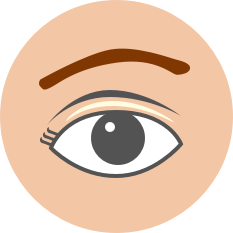
Young or old, the most popular procedure anywhere, local doctors say, will always be for the eyes – whether it’s to carve beauty where it didn’t exist or restore a youthful appearance. Called blepharoplasty, the plastic surgery procedure removes excess skin and fat from the upper and lower eyelids, and comprises three main types of eyelid surgery.
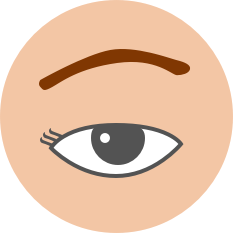
Double Eyelid Surgery
Best for: creating or deepening double eyelid folds
Also known as Asian blepharoplasty, this procedure comes down to either incisional (cutting into the skin) or non-incisional (dissolvable stitches sewn above the eye) surgery.
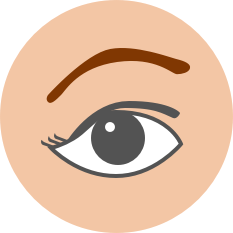
Ptosis Correction
Best for: lifting droopy eyelids
Drooping eyelids, called eyelid ptosis, can hinder eyesight, especially for older patients. After removing the excess skin on the lids, ptosis correction can create a double eyelid fold for people with monolids.
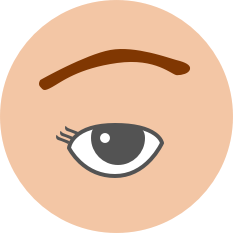
Canthoplasty
Best for: creating bigger or wider eyes
Canthoplasty procedures open up the eye – epicanthoplasty widens the inner corner of the eyelid, while lateral canthoplasty widens the outer corner.
Making the cut
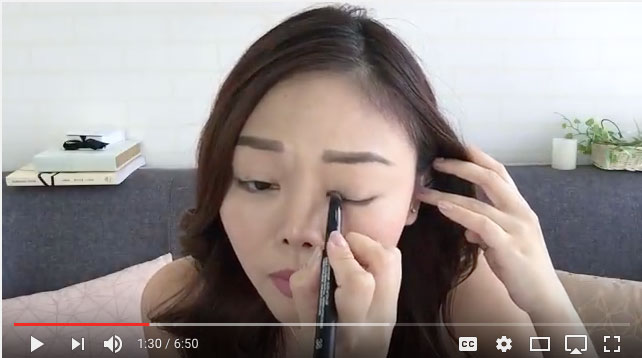
Roxanne, who posts beauty tutorials on her YouTube channel The Skinny Scout, loves creating different looks with makeup but knows it has its limitations. PHOTO: ROXANNE CHIA
But surgery isn’t the first solution youth turn to when they feel dissatisfied with features they were born with. Like Sarah, many who sought to improve their appearance only considered surgery after other aesthetic methods showed cracks.
For years before her rhinoplasty in 2014, Roxanne Chia, 30, had been using makeup to contour the illusion of her ideal nose because she felt hers was too flat. But as the beauty and lifestyle blogger puts it, “Makeup can only do so much.”
“It can never make your nose bridge higher in real life, so from the side my nose still looked flat,” she added. “In photos it looked good, but it doesn’t change things in real life.”
And while some are able to change things in real life, they’re unhappy with how temporary the change is. Katherine Tan, 24, used to stuff her bra with padded inserts, commonly known as ‘chicken cutlets’, but had to remove them at the end of the day.
“Before, I really had nothing on my chest. You know how you normally have a curve up? I didn’t have that,” she said.
The inserts helped. But they also hindered the trainee solicitor’s clothing choices.
“I always had to be very picky when buying clothes – I couldn’t wear something too revealing because my bra would show,” she said. “I couldn’t find anything to wear for graduation, because there are so many things I wouldn’t be able to wear.”
Whether it was double eyelid glue, makeup, or bra inserts, youths eventually realised that most temporary solutions just don’t make the cut.
Our population is still quite reasonable where people just want a nicer version of themselves."
Dr. Tan Ying Chien
Sizing it up: Contrary to popular belief, silicone breast implants don’t come in cup sizes. Size is measured in cubic centimeters (ccs), and implants increase the size of a woman's breasts one cup size every 175 to 200 ccs. Implants come in two shapes – tear drop and round, and the plastic surgeon determines which suits the client best.
Unnaturally natural
Given the slicing, stitching and even scarring involved, plastic surgery is extreme. But while the nature of the method is drastic, the requests being made aren’t. Their counterparts in the US may hanker after celebrity-inspired transformations, but millennial patient profiles here tend towards minor enhancements to look like the best version of themselves.
All five doctors interviewed said the most common request they receive is for the change to look natural.
“Our population is still quite reasonable where people just want a nicer version of themselves – not an unrecognisable version,” said Dr. Tan. For youths, any changes requested are just to make permanent the daily rituals that were previously in place.
Even after her breast augmentation surgery last September, Katherine has not had to buy any new bras. In fact, she has trouble quantifying the change in cup sizes, since she’d worn 34B bras, stuffed, previously.
“From the start I didn’t want huge boobs,” said Katherine, who felt a larger cup size would look disproportionate on her body. “I still wear a 34B, just without all the push-ups and chicken cutlets.”
Similarly, Sarah wanted to keep her double eyelid surgery minimal, choosing the non-incisional option over the incisional. The former tends to be semi-permanent whereas the latter is irreversible.
“The incisional double eyelid surgery would have made my eyes bigger and more defined and everything, but I thought something more natural is fine,” said Sarah.
Slippery slope
But even minor enhancements can qualify as plastic surgery addiction or body dysmorphic disorder, if backed by the wrong motivationsYet not all desires for extreme makeovers are a sign of BDD, and neither is the number of operations a person goes through. Clinical psychologist Dr. Oliver Suendermann said those with BDD can be sieved out based on their motivations, and how they react to their new facial features.
If the motivation is just to look better, a healthy person will feel satisfied after a procedure, said Dr. Suendermann. “If they can afford to do more after, it’s not a problem.”, doctors warned.
“It’s a slippery slope,” said Dr. Tan. “I consider it an addiction when they come in to change things that I don’t think are really wrong.”
Occasionally surgeons get unusual requests, such as to turn clients into Japanese anime characters – which are swiftly turned down. Dr. Kuek recalled a 16-year-old boy who gave him a picture of an anime character and bluntly said, ‘I want to look like that’.
“His reason was: ‘When I walk into a room I want everybody to look at me; I want to be the centre of attention.’”
“So it’s a psychological problem, not a physical problem,” explained Dr. Kuek. “He’s actually a very nice looking boy, but he just wanted to stand out, and that was his way of standing out.”
But these are rare cases; Dr. Kuek and Dr. Tan say they see no more than five of them a year.
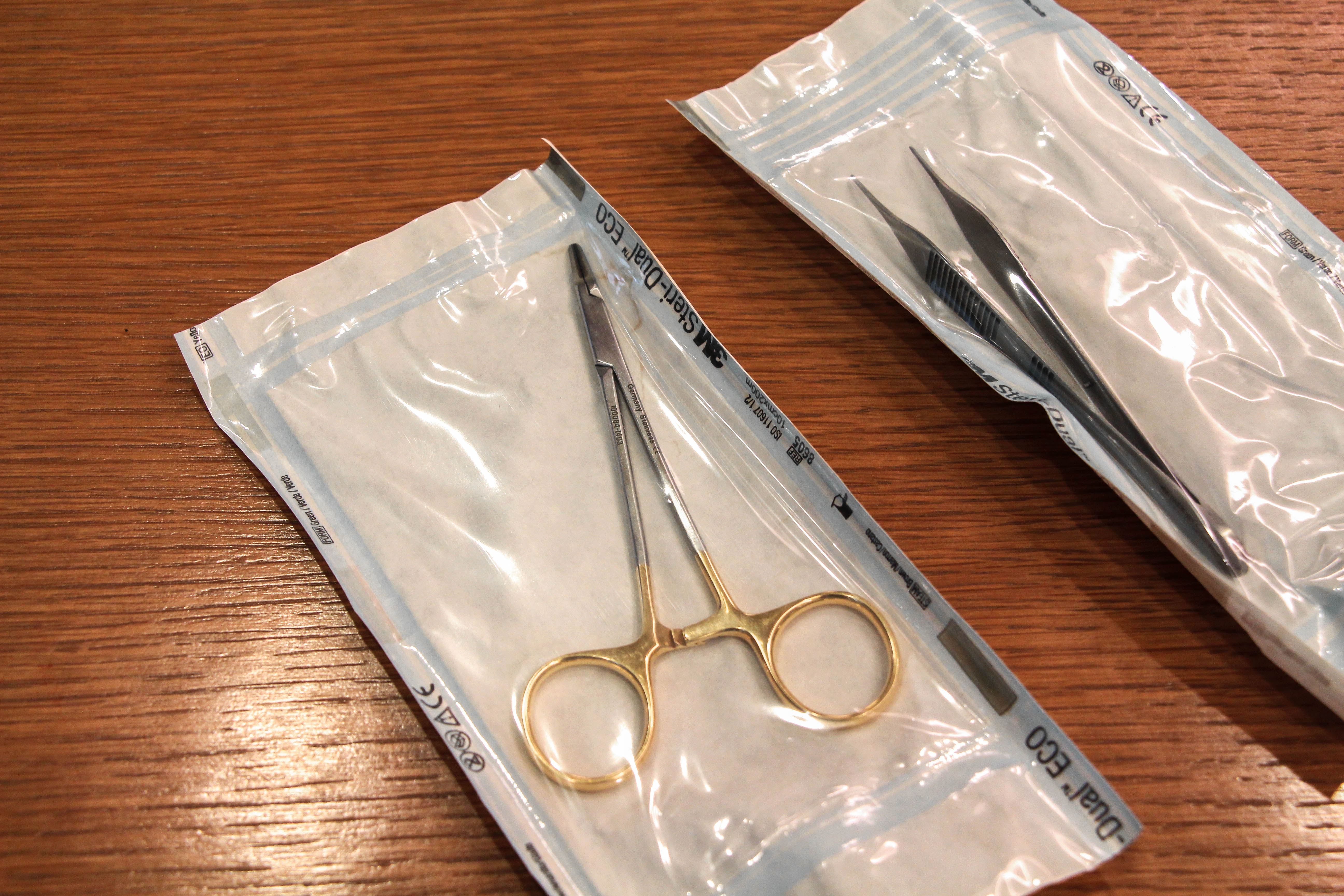
Tools of the trade: A plastic surgeon has about 10 instruments at hand in an operating theatre. Both essential for stitching, the needle holder (left) is used to grip needles – some of which are finer than a strand of hair – while the forceps (right) is used to hold skin tissue. All tools are sterilised and sealed before use.
Still, to avoid going down this path, Singapore’s first plastic surgeon Dr. Fong Poh Him, 65, said before correcting any part of their bodies, youth should first correct misconceptions that they can dictate what procedures should be done without the doctor’s recommendation.
Surgery is fine if you want to use it just to enhance your features and still look like you.
Sarah Ng
“They should see themselves as individuals – unique – and then we polish this uniqueness to make it look nice,” said the surgeon, who runs his practice at Heal Balestier Clinic.
“Everybody has a very good feature somewhere that they can build upon. And then you can get the results you want.”
A year after her double eyelid surgery, Sarah is satisfied with her looks and has no plans for more procedures. It has achieved what she wanted – her previous look, but without the sticky hassle. Even her sister didn’t notice the change.
“Surgery is fine if you want to use it just to enhance your features and still look like you,” she said. “I know it can get addictive, but probably not for me.”
With many leftover bottles of double eyelid glue now useless to her, Sarah has put them up for sale — $10 each on Carousell.